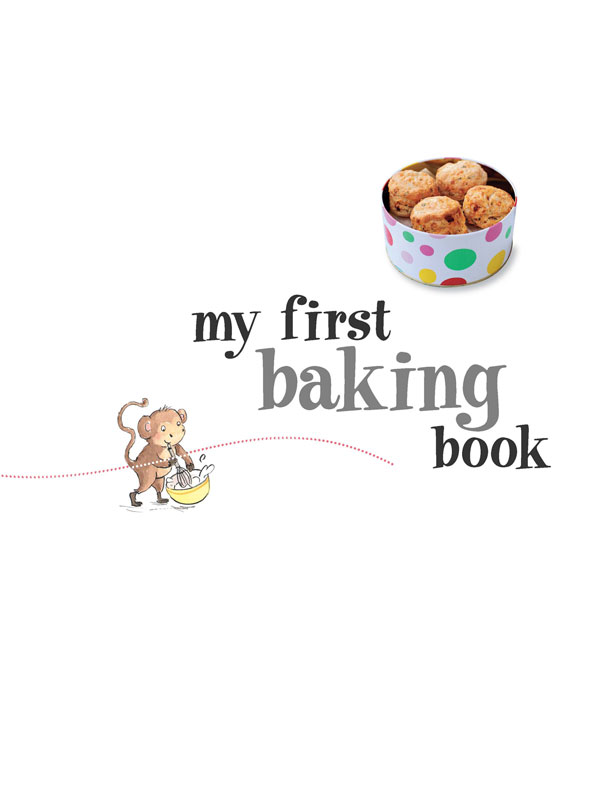
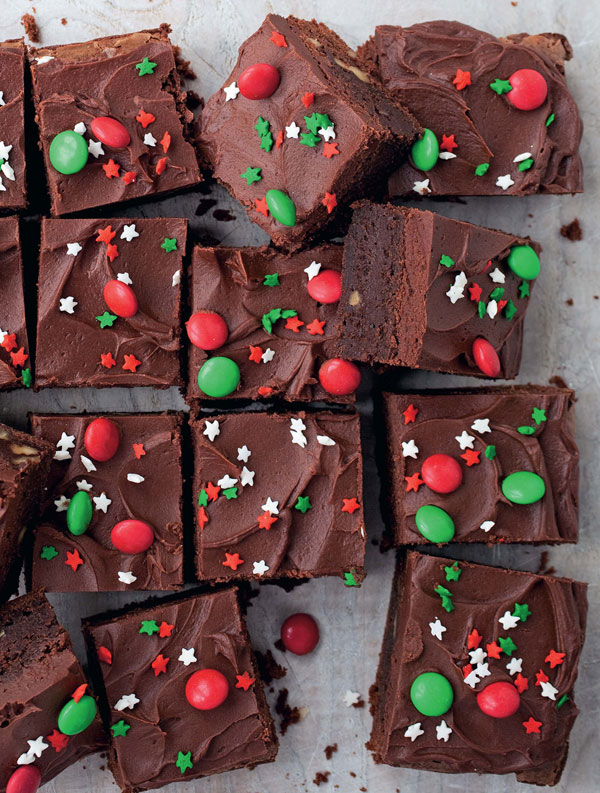

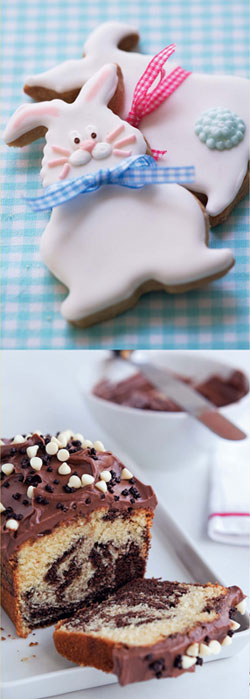 Published in 2012 by CICO Kidz An imprint of Ryland Peters & Small 519 Broadway, 5th Floor, New York NY 10012 2021 Jockeys Fields, London WC1R 4BW www.cicobooks.com 10 9 8 7 6 5 4 3 2 1 Text copyright CICO Books 2012 and the recipe authors listed on Design, photography, and illustration copyright CICO Books 2012 For recipe credits, see . The authors moral rights have been asserted. All rights reserved. No part of this publication may be reproduced, stored in a retrieval system, or transmitted in any form or by any means, electronic, mechanical, photocopying, or otherwise, without the prior permission of the publisher. A CIP catalog record for this book is available from the Library of Congress and the British Library. eISBN: 978-1-78249-017-3 ISBN: 978-1-908170-85-9 Printed in China Series consultant: Susan Akass Editors: Susan Akass and Katie Hardwicke Designer: Elizabeth Healey Step artworks: Rachel Boulton Animal artworks: Hannah George Templates: Simon Roulstone For photography and styling credits, see .
Published in 2012 by CICO Kidz An imprint of Ryland Peters & Small 519 Broadway, 5th Floor, New York NY 10012 2021 Jockeys Fields, London WC1R 4BW www.cicobooks.com 10 9 8 7 6 5 4 3 2 1 Text copyright CICO Books 2012 and the recipe authors listed on Design, photography, and illustration copyright CICO Books 2012 For recipe credits, see . The authors moral rights have been asserted. All rights reserved. No part of this publication may be reproduced, stored in a retrieval system, or transmitted in any form or by any means, electronic, mechanical, photocopying, or otherwise, without the prior permission of the publisher. A CIP catalog record for this book is available from the Library of Congress and the British Library. eISBN: 978-1-78249-017-3 ISBN: 978-1-908170-85-9 Printed in China Series consultant: Susan Akass Editors: Susan Akass and Katie Hardwicke Designer: Elizabeth Healey Step artworks: Rachel Boulton Animal artworks: Hannah George Templates: Simon Roulstone For photography and styling credits, see .
All spoon measurements are level unless otherwise specified. Both US cup sizes or imperial and metric measurements have been given. Use one set of measurements only and not a mixture of both. All eggs are US large (UK medium) unless otherwise stated. This book contains recipes made with raw eggs. It is prudent for more vulnerable people, such as pregnant and nursing mothers, babies and young children, invalids and the elderly, to avoid uncooked dishes made with eggs.
Some of the recipes contain nuts and should not be consumed by anyone with a nut allergy. Ovens should be preheated to the specified temperatures. All ovens work slightly differently. We recommend using an oven thermometer and suggest you consult the makers handbook for any special instructions, particularly if you are cooking in a fan-assisted oven, as you will need to adjust temperatures according to manufacturers instructions. 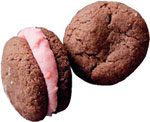 Contents
Contents 
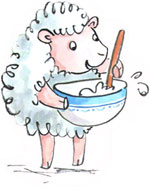

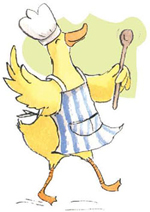 Why learn to bake? There are three great reasonsits lots of fun; you end up with delicious food to eat; and you create something special to share with your family and friends. Whats more, it is a skill that will make you popular all through your life because everyone loves home-baked food.
Why learn to bake? There are three great reasonsits lots of fun; you end up with delicious food to eat; and you create something special to share with your family and friends. Whats more, it is a skill that will make you popular all through your life because everyone loves home-baked food.
This book teaches you how to bake by guiding you through each stage of a recipe, showing you how to do everything from greasing a pan to testing if a loaf is baked. It is divided into four chapters: the first, Perfect Pastry, is all about working with pastry to make mouth-watering savory and sweet pastry recipes. In the second chapter, Sweet Treats, you learn how to make cakes, bars, desserts, and cookies all guaranteed to bring your friends running. The third chapter, Delicious Dough, is all about using dough to make buns and bread-based recipes. Finally, Savory Meals and Snacks teaches you how to make some family meal dishesyour parents will be more than happy when you start offering to cook these for supper! Obviously, you must ask an adult before doing any baking because using knives, stoves, ovens, and electrical equipment can be dangerous. However, the more you learn, the safer it will become.
To help you, we have also included a techniques section with more detail about everything you will need to know to cook up the recipes. We have also graded each recipe with a grading of one, two, or three smiley facessee below. Level one recipes are the easiest, level two recipes have more stages, and level three recipes are the longest and most difficultit may be best to leave these for when you have become more of an expert cook. So, wash your hands, tie on your apron, and start baking! Project levels Level 1 These have only a few stages and require just a little adult help. Level 2 These include more stages, some difficult techniques, and require some adult help. 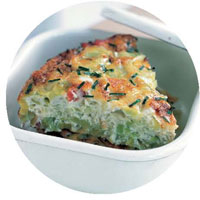 Always wash your hands before you start cooking and after touching raw meat.
Always wash your hands before you start cooking and after touching raw meat.  Always wash your hands before you start cooking and after touching raw meat.
Always wash your hands before you start cooking and after touching raw meat.
Tie long hair back so that it is out of the way. Wear an apron to keep your clothes clean. Make sure your ingredients are fresh and within their use-by date. When using sharp knives, electrical equipment, or the stovetop (hob), microwave, or oven, always ask an adult to help you. Use oven mitts when holding hot pans or dishes. Use a chopping board when using a sharp knife or metal cookie cuttersthis protects the work surface and will help to stop the knife from slipping.
Keep your work surface clean and wipe up any spills on the floor so that you dont slip. Dont forget to clear up afterwardwashing the dishes can be as much fun as baking!  Kitchen equipment Strainer (sieve) Colander Vegetable peeler Grater Garlic crusher Sharp knives Palette knife Cutting board Egg cup Ovenproof dishes Plastic wrap (clingfilm) Baking parchment Paper towel (kitchen paper) Mixing bowls in different sizes Heatproof glass bowls Microwave-safe bowls Saucepans Wooden spoon Measuring pitcher (jug) Weighing scales and measuring cups Measuring spoons Wire whisk Spatula Pastry brush Rolling pin 6- or 12-hole muffin pans 12-hole mini muffin pan Paper muffin or cupcake cups Baking sheets Cake pans Wire cooling rack Cookie cutters Baking beans
Kitchen equipment Strainer (sieve) Colander Vegetable peeler Grater Garlic crusher Sharp knives Palette knife Cutting board Egg cup Ovenproof dishes Plastic wrap (clingfilm) Baking parchment Paper towel (kitchen paper) Mixing bowls in different sizes Heatproof glass bowls Microwave-safe bowls Saucepans Wooden spoon Measuring pitcher (jug) Weighing scales and measuring cups Measuring spoons Wire whisk Spatula Pastry brush Rolling pin 6- or 12-hole muffin pans 12-hole mini muffin pan Paper muffin or cupcake cups Baking sheets Cake pans Wire cooling rack Cookie cutters Baking beans 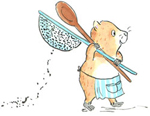
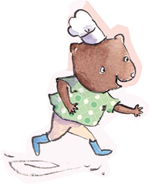 Using an oven The first thing you need to do for most of the baking recipes is turn on the oven. This is because the oven needs to be hot enough to cook the food you put into it and it takes a little while to heat up. The recipe instructions always tell you at what temperature to set your oven. Ask an adult to show you how your oven shows you the temperature and how to set the oven to the correct temperature. On most ovens there is a light, which goes out when the oven reaches the temperature you have set, and then it is ready to use.
Using an oven The first thing you need to do for most of the baking recipes is turn on the oven. This is because the oven needs to be hot enough to cook the food you put into it and it takes a little while to heat up. The recipe instructions always tell you at what temperature to set your oven. Ask an adult to show you how your oven shows you the temperature and how to set the oven to the correct temperature. On most ovens there is a light, which goes out when the oven reaches the temperature you have set, and then it is ready to use.
Next page
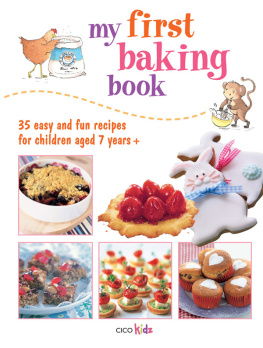

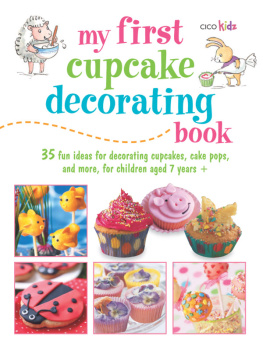



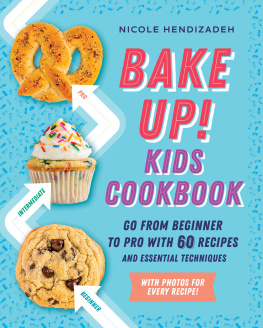

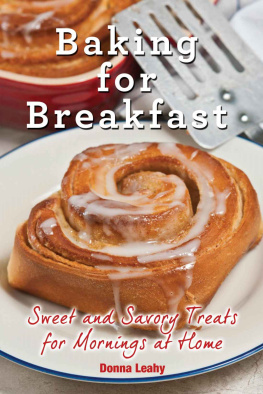



 Published in 2012 by CICO Kidz An imprint of Ryland Peters & Small 519 Broadway, 5th Floor, New York NY 10012 2021 Jockeys Fields, London WC1R 4BW www.cicobooks.com 10 9 8 7 6 5 4 3 2 1 Text copyright CICO Books 2012 and the recipe authors listed on Design, photography, and illustration copyright CICO Books 2012 For recipe credits, see . The authors moral rights have been asserted. All rights reserved. No part of this publication may be reproduced, stored in a retrieval system, or transmitted in any form or by any means, electronic, mechanical, photocopying, or otherwise, without the prior permission of the publisher. A CIP catalog record for this book is available from the Library of Congress and the British Library. eISBN: 978-1-78249-017-3 ISBN: 978-1-908170-85-9 Printed in China Series consultant: Susan Akass Editors: Susan Akass and Katie Hardwicke Designer: Elizabeth Healey Step artworks: Rachel Boulton Animal artworks: Hannah George Templates: Simon Roulstone For photography and styling credits, see .
Published in 2012 by CICO Kidz An imprint of Ryland Peters & Small 519 Broadway, 5th Floor, New York NY 10012 2021 Jockeys Fields, London WC1R 4BW www.cicobooks.com 10 9 8 7 6 5 4 3 2 1 Text copyright CICO Books 2012 and the recipe authors listed on Design, photography, and illustration copyright CICO Books 2012 For recipe credits, see . The authors moral rights have been asserted. All rights reserved. No part of this publication may be reproduced, stored in a retrieval system, or transmitted in any form or by any means, electronic, mechanical, photocopying, or otherwise, without the prior permission of the publisher. A CIP catalog record for this book is available from the Library of Congress and the British Library. eISBN: 978-1-78249-017-3 ISBN: 978-1-908170-85-9 Printed in China Series consultant: Susan Akass Editors: Susan Akass and Katie Hardwicke Designer: Elizabeth Healey Step artworks: Rachel Boulton Animal artworks: Hannah George Templates: Simon Roulstone For photography and styling credits, see . Contents
Contents 


 Why learn to bake? There are three great reasonsits lots of fun; you end up with delicious food to eat; and you create something special to share with your family and friends. Whats more, it is a skill that will make you popular all through your life because everyone loves home-baked food.
Why learn to bake? There are three great reasonsits lots of fun; you end up with delicious food to eat; and you create something special to share with your family and friends. Whats more, it is a skill that will make you popular all through your life because everyone loves home-baked food. Always wash your hands before you start cooking and after touching raw meat.
Always wash your hands before you start cooking and after touching raw meat.  Kitchen equipment Strainer (sieve) Colander Vegetable peeler Grater Garlic crusher Sharp knives Palette knife Cutting board Egg cup Ovenproof dishes Plastic wrap (clingfilm) Baking parchment Paper towel (kitchen paper) Mixing bowls in different sizes Heatproof glass bowls Microwave-safe bowls Saucepans Wooden spoon Measuring pitcher (jug) Weighing scales and measuring cups Measuring spoons Wire whisk Spatula Pastry brush Rolling pin 6- or 12-hole muffin pans 12-hole mini muffin pan Paper muffin or cupcake cups Baking sheets Cake pans Wire cooling rack Cookie cutters Baking beans
Kitchen equipment Strainer (sieve) Colander Vegetable peeler Grater Garlic crusher Sharp knives Palette knife Cutting board Egg cup Ovenproof dishes Plastic wrap (clingfilm) Baking parchment Paper towel (kitchen paper) Mixing bowls in different sizes Heatproof glass bowls Microwave-safe bowls Saucepans Wooden spoon Measuring pitcher (jug) Weighing scales and measuring cups Measuring spoons Wire whisk Spatula Pastry brush Rolling pin 6- or 12-hole muffin pans 12-hole mini muffin pan Paper muffin or cupcake cups Baking sheets Cake pans Wire cooling rack Cookie cutters Baking beans 
 Using an oven The first thing you need to do for most of the baking recipes is turn on the oven. This is because the oven needs to be hot enough to cook the food you put into it and it takes a little while to heat up. The recipe instructions always tell you at what temperature to set your oven. Ask an adult to show you how your oven shows you the temperature and how to set the oven to the correct temperature. On most ovens there is a light, which goes out when the oven reaches the temperature you have set, and then it is ready to use.
Using an oven The first thing you need to do for most of the baking recipes is turn on the oven. This is because the oven needs to be hot enough to cook the food you put into it and it takes a little while to heat up. The recipe instructions always tell you at what temperature to set your oven. Ask an adult to show you how your oven shows you the temperature and how to set the oven to the correct temperature. On most ovens there is a light, which goes out when the oven reaches the temperature you have set, and then it is ready to use.